GRAND MASTERS
By the Royal Decree of 2 June, 1730, of Philip V, the Maestranza de Caballería de Sevilla became Royal, and received a number of important privileges, such as the exclusive use of its own uniform at any event, like military officers. The most important privilege was that the Hermano Mayor of the Corporation would always be a member of the Royal Family. To that end the king appointed his son, the Infante Philip, Duke of Parma. In 1823 Fernando VII granted a new and important privilege to the Real Maestranza, by which the Hermano Mayor would thenceforward be the king himself.
There follows a brief historical review of the different Hermanos Mayores starting from the present Hermano Mayor H.M. King Felipe VI, and going back to the origins of the Corporation.
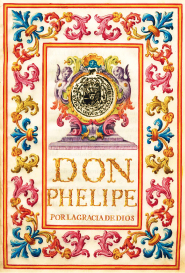
Manuscript.
Drawing and border of Letters Patent of Nobility. 1739. RMCS library.

Manuscript.
Drawing and border of Letters Patent of Nobility. 1739. RMCS library.
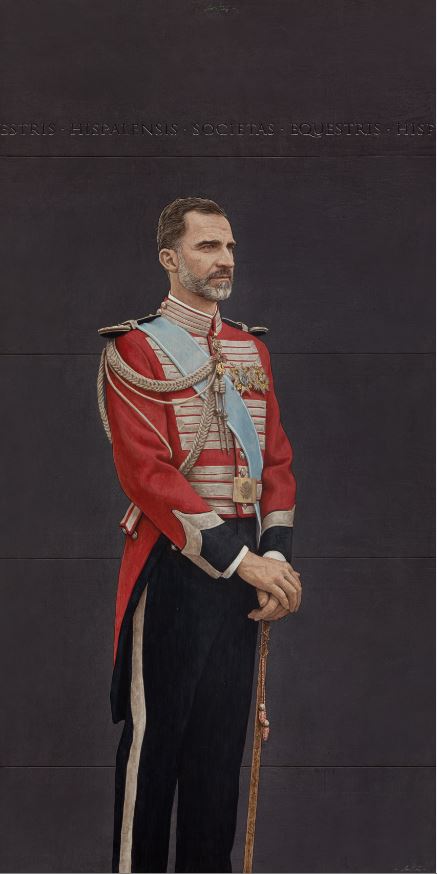
On 8 February 2005, Their Majesties King Felipe VI and Queen Letizia, at the time the Prince and Princess of Asturias, presided over the award ceremony at the Royal Bullring of Seville for the 2003/2004 University Final Year Projects and the Bullfighting Trophies corresponding to the previous season.
During the course of the ceremony, His Majesty the King addressed a few words to those present in which he emphasised the importance of these awards granted by the Real Maestranza de Caballería in recognition of the personal efforts invested by the winners.
In November 2008, His Majesty the King, as Prince of Asturias at the time, chaired a general meeting at which the Corporation´s Lazo de Dama (Dame´s Bow) was bestowed on H.M. the Queen, then Princess of Asturias. Their Majesties then officially opened the new Prints and Paintings Halls situated in the bullring of the Real Maestranza de Caballería of Seville.
On 12 June 2015, H.M. the King, for the first time in his capacity as Hermano Mayor, chair a general meeting of the Real Maestranza de Caballería, also attended by the boards of governors of the Reales Maestranzas of Ronda, Granada, Valencia and Zaragoza, at wich he spoke about the history and achievements of these corporations. His Majesty then presided over award ceremony for the 2013/2014 University Final Year Projects and the Bullfighting Trophies for the 2014 season, delivering a speech in which he remarked on history of the university awards, now in their fiftieth year.
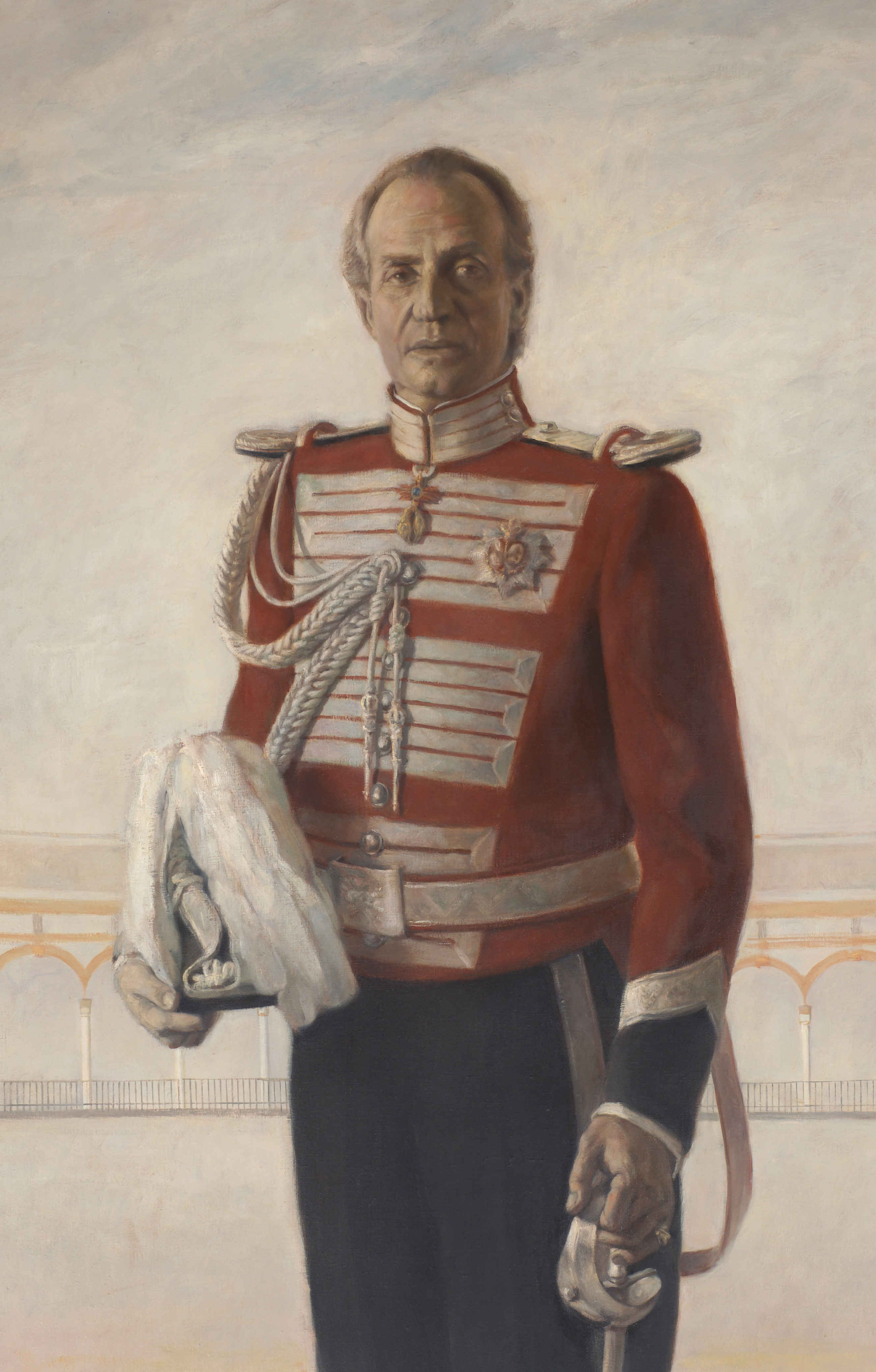
On 3 April, 2006, His Majesty the King presided, for the first time, over the award ceremony for the 2004/2005 University Final Year Projects and the Bullfighting Trophies for the 2005 season. In his speech he remarked on the diverse activities carried out by the Real Maestranza de Caballería of Seville.
On 22 May 2008, His Majesty the King chaired, also for the first time, a general meeting at which he praised the Real Maestranza´s social actions and sponsorhip activities. He then officially opened the monument dedicated to H.R.H. the Countess of Barcelona situated beside the entrance to the Corporation´s offices. Later on, His Majesty presided over a bullfight, accompanied by H.R.H. the Infanta Elena.
On 25 March 2010, H.M. the King chaired the general meeting that took place to commemorate the gathering of the Reales Maestranzas de Caballería. He then officially opened the newly renovated bullring and later on presided over the Real Maestranza Award Ceremony, commenting in his speech on the Corporation´s cultural, social and philanthropic actions.
By appointment of His Majesty the King, since June 2014 H.M. King Juan Carlos I has occupied the post of Hermano Mayor Emérito of the Real Maestranza de Caballería of Seville.

In 1987 the “Vth Centenary of the Discovery of America Research Fellowship” was created, intended for doctoral-level research work aimed at explaining Seville’s leanings towards America.
On 3 April, 1988 the artistic lighting of the Bullring was inaugurated in the presence of H.R.H. María de las Mercedes, Countess of Barcelona. In that same year, under the Honorary Presidency of H.R.H. the Earl of Barcelona, the “First Real Maestranza de Caballería de Sevilla National Painting Prize” was announced.
In addition, at the request of the Chapter of the cathedral, and with the blessing of the General Assembly of the Real Maestranza, the restoration of the choir of Seville Cathedral was begun.
On 6 April, 1991, H.R.H. the Earl of Barcelona presided over the annual meeting of the Reales Maestranzas, and on that occasion there was an Extraordinary General Assembly. On the same day, and prior to the General Assembly, His Highness visited the Museum of the Royal Bullring, which had been inaugurated by H.R.H. the Countess of Barcelona in 1989, and as Honorary President of the Real Maestranza de Caballería de Sevilla, presented its “Third National Painting Prize”, in a solemn ceremony.
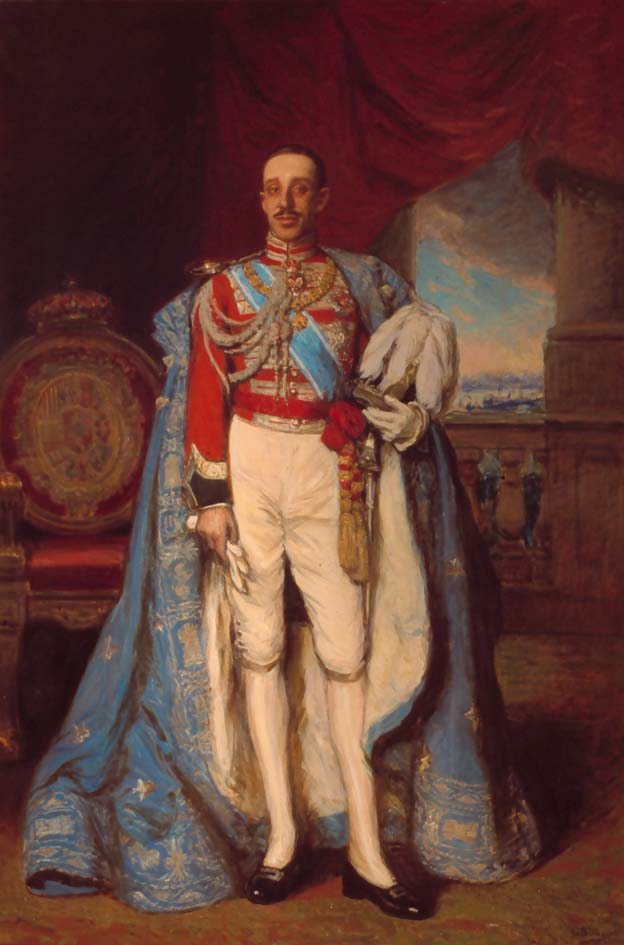
Between 1891 and 1892 donations were made for the victims of the catastrophe at Consuegra and the great flood in Seville.
In 1892, their Majesties the King and Queen visited Seville on the occasion of the celebration of the IVth Centenary of the Discovery of America, and this was the opportunity to obtain approval for the building of a group of Catholic primary schools, and for their assignment to the City Council. Their Majesties were present at the beginning of the works, laying the first stone in a leaden chest containing several silver and gold coins bearing the bust of Alfonso XIII, together with newspapers from that day.
Another initiative of the Real Maestranza in the context of the IVth Centenary of the Discovery of America was to pay for a sloop called Cortés for the sailor with the best merits, as a tribute to the Spanish Navy.
In 1894, in a solemn ceremony, the schools located in la Resolana de la Macarena were transferred to the City Council.
In 1898, noteworthy as yet another of the many contributions that were made to the Army, was the donation of a quantity of money to support the war against the United States.
On the occasion of the coming of age and swearing-in of His Majesty the King, the Real Maestranza decided to build a soup kitchen and a shelter school for infants in Triana, assigning them to the City Council. They were inaugurated in 1904 in the presence of its Hermano Mayor.
Also worthy of mention is a large donation for the reconstruction of the Church of Nuestra Señora de los Angeles, which collapsed in 1901.
In 1905, for town planning reasons, the Corporation had to abandon its Chapel of the Virgen del Rosario, situated in the convent of Regina Angelorum, giving up the site for the new extensions that were necessary for the plan of the city. Worship was provisionally transferred to the convent church of Santa María la Real.

During the regency of María Cristina, among the most noteworthy actions remembered in the co-operation of the Real Maestranza with the City was the donation of 120,000 reales to pay for the expenses resulting from the collapse of part of the cathedral.
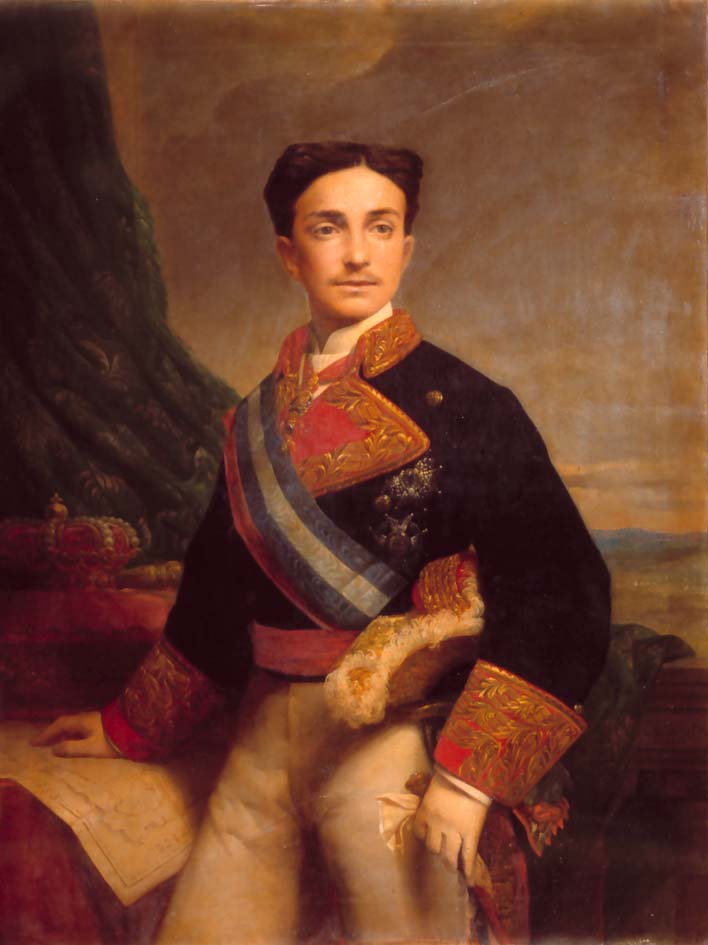
In this period, and after 120 years of work and a process fraught with difficulties, the masonry work to complete the bullring was finished, finally replacing all the wooden tendidos.
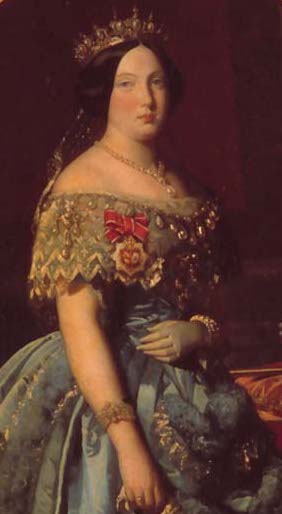
Expenses were incurred for repairs and continuance of work at the bullring, and the total cost was borne by the Caballero Maestrante, as well as the costs of celebrations and donations.
In 1854 a religious function was held to solemnize the declaration of the Mystery of the Immaculate Conception as a Dogma of Faith.
In 1859, for the war in Africa, finance was provided for 24 artillery pieces of the four batteries of rifled muzzle-loading mountain guns, which were manufactured in the bronze foundry of this capital, and which were very useful for the Spanish troops in different scenarios.
Isabel II authorized these pieces to be inscribed with the mention that their cost had been defrayed by the Real Maestranza.
In 1860 sponsorship was provided for the first horse races to be held in Seville, the cost of training and of installing the racecourse on the plains of Tablada being for its account. This was the embryo from which the Sociedad de Carreras was formed.
This was a period of great ostentation, coinciding with the stay in Seville of the Duke and Duchess of Montpensier, who frequently visited the bullring together with members of their family. In spite of difficulties, contributions continued to be made for these events, in the form of gifts and donations, such as those presented for the birth of the Infante Felipe, for the cholera epidemic of ’65, and for the end of the Carlist War, among other occasions.
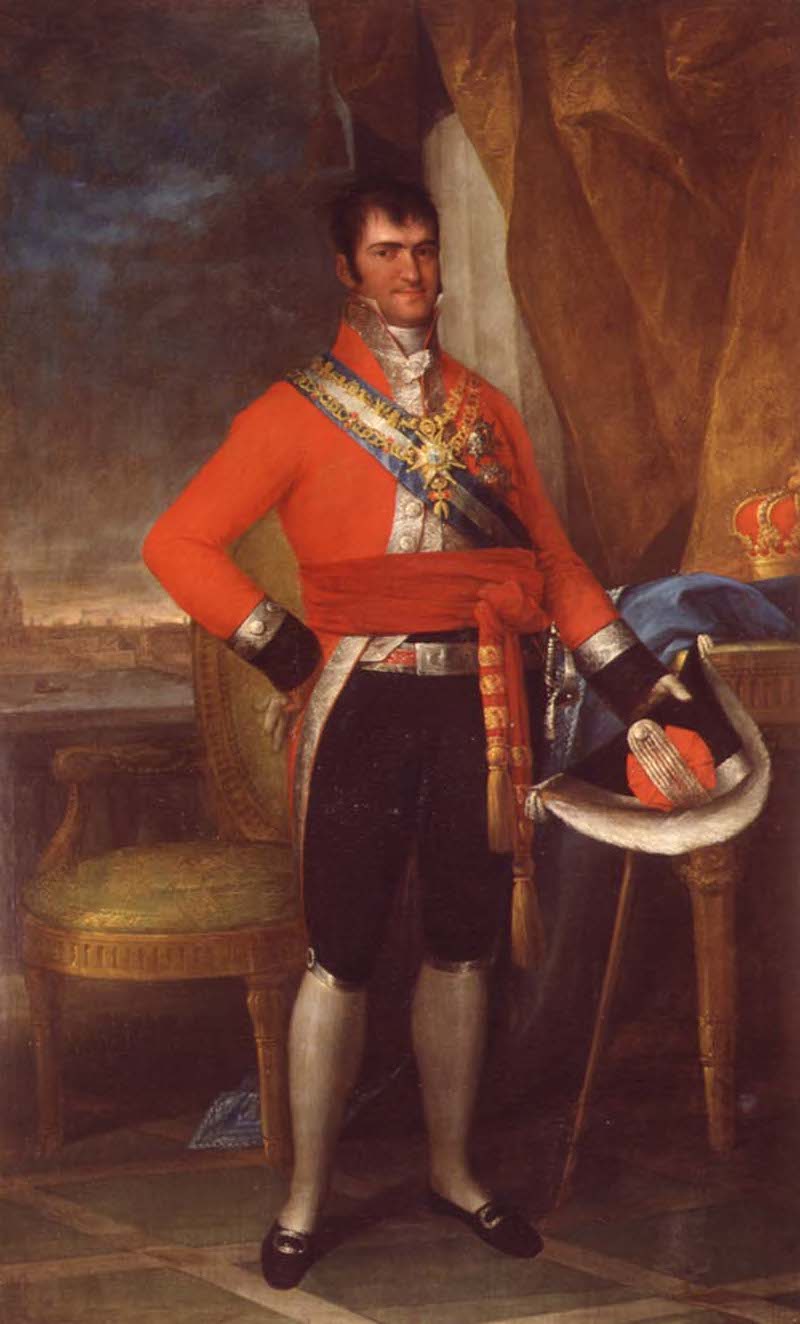
The XIXth century began with serious financial difficulties for the Corporation, as a result of limitations in the interptetation of its privileges and the suspension of bullfighting.
With the beginning of the War of Independence, the Real Maestranza agreed to send all of its income , and as many resources as it could finance, and even suspended the salaries of its staff.
In 1809 the point was reached when the bullring and its wood were given up to construct stables and trainers for the Army’s horses. More than two-thirds of the Corporation’s members, all those who were able to bear arms, joined the war against the French, many died in combat, and they were important in that campaign in places such as Úbeda and Almonacid.
Those who remained in Seville, in order to protect the statue of Our Lady of the Rosario from the abuses of the occupying troops, transferred it and its accoutrements from the Chapel of Regina Angelorum to the Church of San Miguel (now disappeared), and kept up a tenacious resistance against the new governors.
In 1812 he was associated with the movement of the Cortes of Cadiz, swearing its Constitution. In 1814 the privilege of holding bullfights was restored. Two years later, Queen María Isabel Francisca was regaled.
In 1823, festivals and performances with bulls were held in honour of Fernando VII, who granted a new and important privilege to the Corporation. Thenceforward, the Hermano Mayor of the Real Maestranza would be the King himself.
In 1833, the Real Maestranza came to Madrid together with the other Maestranzas to take part in jousting to celebrate the oath-taking of the Princess of Asturias, who was to become Isabel II.
In 1786 bullfighting was suppressed by order of Carlos III. The new bullring was half completed, and the Corporation accumulated large debts. The privilege was restored by Carlos IV in 1791, but until 1793 bullfights could not be held because of strict limitations.
In 1794, the Real Maestranza provided 100 men for the war against France, where Don Baltasar de Madariaga lost his life in Roussillon. In that same year new Ordinances were approved on the basis of the new extensions and grants of privileges.
In 1796 festivals were organized for the visit of Carlos IV to Seville. In gratitude for its loyalty to the Crown, the Real Maestranza was then granted the privilege of putting chains on the door of its bullring, as a perpetual sign of the honour bestowed.
In 1805, by Royal Decree, bullfights were again suppressed. That same year, some of the material part of the ring (two ochavas) collapsed, and a hurricane destroyed all of the wooden part. In spite of the financial difficulties, the Real Maestranza managed to donate 100,000 reales for different needs of the City and the Crown
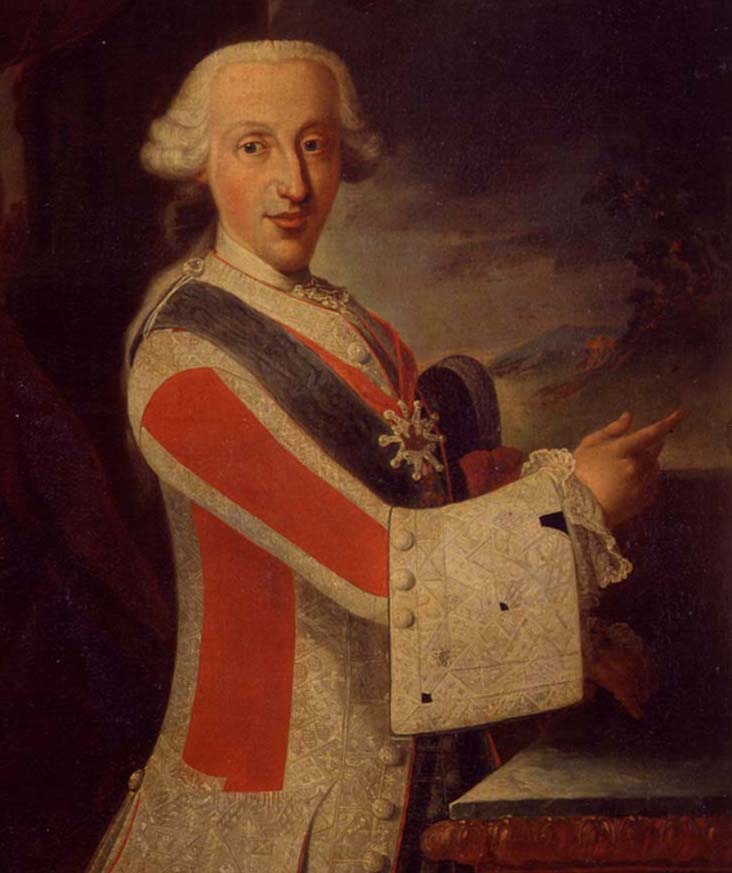
He was an Infante of Spain, the sixth child of Felipe V of Spain and of his second wife, Isabel de Farnesio, Duchess of Parma. He had an ecclesiastical career and was Cardinal Archbishop of Toledo and Primate of the Spanish Realms (1735), and Archbishop of Seville (1741). He abandoned the ecclesiastical state in 1754, and in 1761 became the XIIIth Earl of Chinchón.
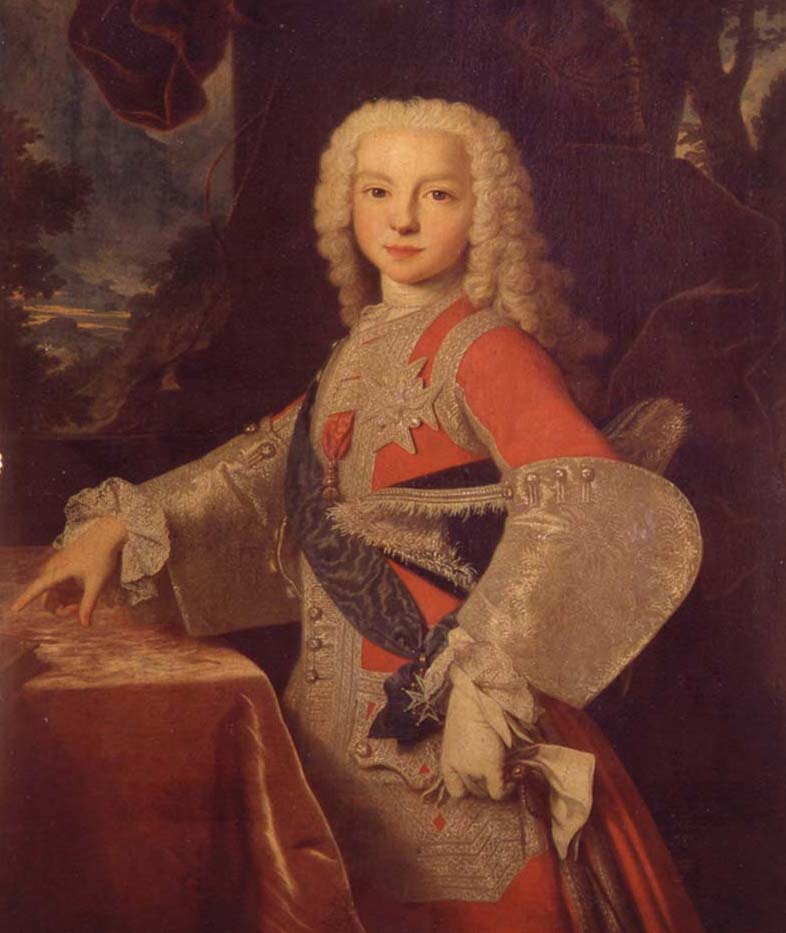
On 30 August, 1731, the second Ordinances were drawn up and approved to correspond with the new privileges granted by Felipe V to the Real Maestranza. Sixty six knights attended this Council.
Caballeros Maestrantes participated in several military expeditions during this period, such as the capture of Oran (1 July, 1732) and the Italian campaigns to put the Infante Don Carlos (the future Carlos III) on the throne of the Two Sicilies.
There was also participation in the campaign from 1741 to 1748.
In 1738 possession was obtained of the site where the provisional bullring was located, and construction of the material part of the bullring began. In that same year, festivities were organized in honour of the wedding of Carlos III and María Amelia Cristina. In 1765 the Real Maestranza participated in the festivities for the wedding of the Prince of Asturias (Carlos IV) and María Luisa de Parma.
In 1754 bullfighting festivals, which were the main support of the Real Maestranza, were suppressed by order of Fernando VI. They were reinstated in 1759.
In 1779 the Real Maestranza volunteered to take part in the war against England.
Prior to these date, the Hermano Mayor was Caballero Maestrante.
-
DON JUAN BAUTISTA DE MADARIAGA Y RAMÍREZ MARMOLEJO Y URSÚA, MARQUÉS DE LAS TORRES
Hermano Mayor from June 1, 1728 to January 2, 1730, when he died. -
DON FRANCISCO IGNACIO FERNÁNDEZ DE SANTILLÁN LASSO DE LA VEGA VILLEGAS Y MARMOLEJO, MARQUÉS DE LA MOTILLA
Hermano Mayor from June 11, 1727 to June 1, 1728. -
DON FERNANDO DE ESPINOSA MALDONADO DE SAAVEDRA, PRIMER CONDE DEL ÁGUILA
Hermano Mayor from the November 12, 1725 until June 11, 1727. -
DON JUAN DE CÓRDOBA Y LASSO DE LA VEGA
Hermano Mayor from the May 7, 1702 until October 23, 1724. By his resignation on that date was holding the position, interim, the Marqués de Paradas, as Hermano Mayor, this interim lasting until November 12, 1725. -
DON PEDRO VERDUGO DE ALBORNOZ URSÚA LA CUEVA, CONDE DE TORRE PALMA
Hermano Mayor from the June 14, 1700 until May 1702. He was re-elected on August 18, 1701. -
DON ANTONIO ENRÍQUEZ DEL CASTILLO Y DE ESQUIBEL
Hermano Mayor from the May 28, 1698 until May 31, 1700. He was reelected in May 1699. -
DON DIEGO TELLO DE MEDINA GUZMÁN Y VILLEGAS, MARQUÉS DE PARADAS
Hermano Mayor from the July 14, 1696 until May 28, 1698. He was re-elected on June 5, 1697. -
DON JUAN DE CÓRDOBA Y LASSO DE LA VEGA
Hermano Mayor from May 1693 until June 14, 1696. He was re-elected on May 23, 1694. -
DON GASPAR DE ANDRADE
Hermano Mayor from February 1691 until May 1, 1693. -
DON JOAQUÍN DE CHAVES
Hermano Mayor in 1690 (w/d) until February 1691. -
DON JUAN SAAVEDRA RAMÍREZ DE ARELLANO ALVARADO, PRIMER MARQUÉS DEL MOSCOSO
Hermano Mayor from the October 28, 1688 hasta 1690. He was reelected in 1689. -
DON ANTONIO FEDERIGUI Y SOLÍS, PRIMER MARQUÉS DE PATERNA
Hermano Mayor from the August 9, 1687 until October 28, 1688. -
DON ANTONIO DE SILVA
Hermano Mayor from the July 7, 1686 to August 9, 1687. -
DON ÁLVARO COLÓN DE PORTUGAL Y CASTRO
Hermano Mayor from the May 26, 1682 until July 7, 1686. He was re-elected on May 21, 1683 and again on May 29, 1684. -
DON PEDRO JOSÉ DE GUZMÁN Y DÁVALOS PONCE DE LEÓN FERNÁNDEZ DE SANTILLÁN Y MESSÍA, PRIMER MARQUÉS DE LA MINA
Hermano Mayor from the May 22, 1680 until May 26, 1682. He was re-elected on June 3, 1681. -
DON ALONSO FERNÁNDEZ DE SANTILLÁN Y VILLEGAS, MARQUÉS DE LA MOTILLA
Hermano Mayor from the May 21, 1679 until May 22, 1680. He was re-elected on October 24. -
DON FERNANDO DE SOLÍS Y BARRADAS, PRIMER MARQUÉS DE RIANZUELA
Hermano Mayor from the June 7, 1678 until May 21, 1679. -
DON FRANCISCO MARMOLEJO
Hermano Mayor from the May 31, 1677 until June 7, 1678. -
DON FERNANDO DE SOLÍS Y BARRADAS, PRIMER MARQUÉS DE RIANZUELA
Hermano Mayor from June 1, 1675 until May 29, 1676. He was reelected to the May 31, 1677. -
DON PEDRO JOSÉ DE GUZMÁN Y PORTOCARRERO FERNÁNDEZ DE CÓRDOBA Y LUNA, MARQUÉS DE LA ALGABA
Hermano Mayor from the April 13, 1674 until June 1, 1675. -
DON AGUSTÍN DE GUZMÁN Y PORTOCARRERO FERNÁNDEZ DE CÓRDOBA Y LUNA, DESPUÉS MARQUÉS DE LA ALGABA
Hermano Mayor from the April 21, 1671 until April 13, 1674.
